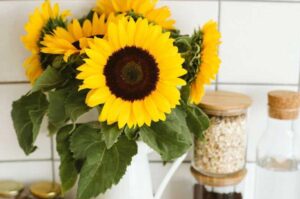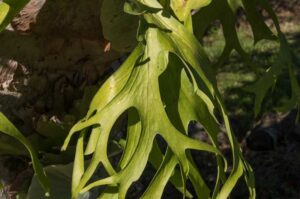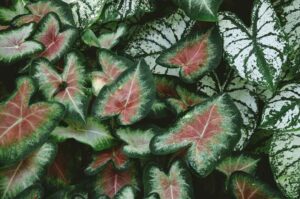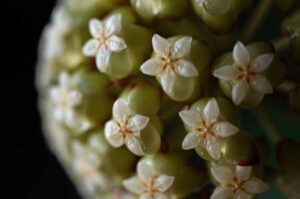Why are my Dracaena Leaves turning black? (Solutions Explained)
Dracaena is a popular houseplant both for indoor and outdoor gardening. Dracaena is mainly found in the tropical region of Africa. It is known for its ability to grow without any care. However, the Dracaena plant has one serious problem that creates concern among most people.
The majority of the Dracaena plant has this problem of leaves turning black, yellow, or brown after a particular time. Here are the reasons.
The most common reasons for which Dracaena leaves are turning black are, overwatering and fluctuation in temperature. Apart from these issues, other causes include underwatering, disease infestation, lack of fertilizer application, and inappropriate potting mix.
There are other various reasons for Dracaena leaves turning black. We can’t consider one specific reason for this particular problem. There may be multiple reasons that could dry or black the leaves. Today in this article you will find all the reasons for the problem. Moreover, we will also discuss methods to prevent and solutions for the particular cause.
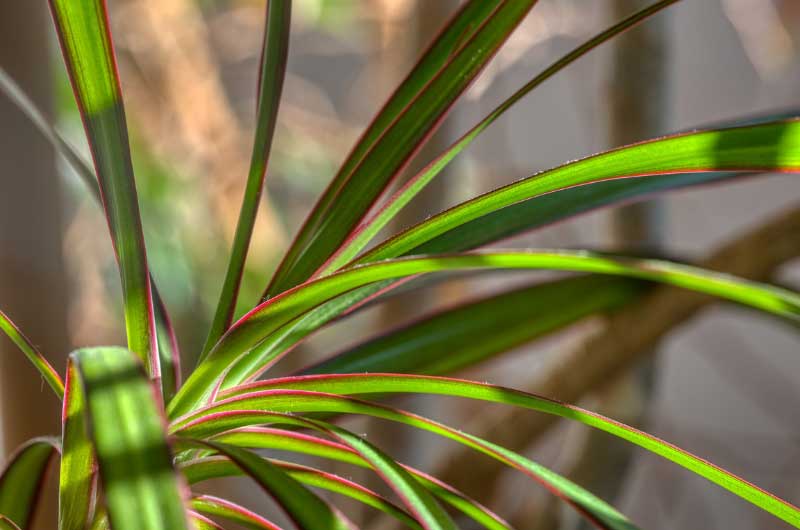
Reasons for Dracaena leaves turning black.
The common reason for black leaves is when plants allow the microorganism to take over in its growth cycle. Yes, there are different types of microorganisms in our surroundings that exist in plants and animals in certain situations. Besides this, there are many reasons, including temperature, watering, and disease. Here is a list of causes and solutions for the problem:
Fluctuations in Temperature
Dracaena is known for its ability to grow without any care. But, sometimes, a fluctuation in temperature could black or brown the leaves. Dracaena grows in the tropical region at a temperature between 15 degrees to 26 degrees Celsius. In this region, the temperature remains similar over the whole year.
Similarly, there is no such similarity in our home when it comes to temperature. The leaf of Dracaena is likely to get black when the temperature falls lower than the required temperature. Similarly, when it comes to indoors, people are more likely to use air conditioning in the room. And, this could also certainly affect Dracaena leaves, and it is more likely to turn yellowish or brownish.
Direct outdoor sunlight on the plant could burn the leaves or dry them when it comes to direct outdoor sunlight. Moreover, we can’t control the outside temperature as it gets more cold and hot depending upon the season. Therefore, outdoor Dracaena plants are more likely to get black leaves as compared to indoor.
Solution
Dracaena plant requires a stable temperature, neither too hot nor too cold. But, the temperature is something that an individual cannot control. Depending upon the season, the temperature is likely to fluctuate. Here are some solutions that you can follow to prevent fluctuating temperature.
- Consider keeping the plant indoors during the evening when it gets too cold.
- Temperature is likely to increase and decrease even indoors. So, it is better to have a thermometer to know the temperature inside the room.
- You can shelter the plant by wrapping it in plastic to prevent decreasing temperature.
- Avoid keeping the plant from the places where it receives direct sun lights.
- Consider keeping the plant beside windows and ensuring it is not receiving direct sunlight.
- Avoid keeping the plant near air conditioning.
Lack of soil quality or fertilizer
Fertilizer and quality soil is the most important things for every plant. The nutrient is necessary for every plant-like human being when Dracaena leaf tips or edges start to turn yellow or black. It could be due to a lack of missing nutrients.
Similarly, overusing fertilizer is also bad for the plant. Some fertilizers are not suitable, especially for Dracaena plants. Perlite is a fertilizer that one should avoid using on Dracaena plants. It is harmful to most plants, including Dracaena.
Furthermore, Fluoride is also bad for the dracaena plants, so make sure to avoid using this on the plant. Fluoride is a naturally occurring element around us; it is found in water, plants, soil, and rocks. There are different techniques to find out the presence of Fluoride in the plant. Here is the list of techniques or methods to find out Fluoride’s presence.
- Check the water using a water testing strip. It is available in almost every hardware store.
- If other plants in your garden area are turning yellow or black, Fluoride is present in the water or the soil.
Solution
As mentioned earlier, if your fertilizer has a presence of perlite, then avoid using it in Dracaena plants. Moreover, consider transplanting the plant into another pot or another area. Nutrients are essential for every plant. Give your plant a couple of hours every month to add fertilizer and other nutrients.
During the fall and the winter, it is not necessary to add fertilizer as it is the time of inactive growth for Dracaena. Adding more fertilizer is also not suitable for the plant. So, you can add fertilizer depending upon the growths of leaves. If the leaves are growing rapidly, then ease up adding fertilizer.
Similarly, if the leaves are growing slowly, consider adding more fertilizer than usual. Adding more fertilizer can also turn Dracaena leaves black. Let’s summarize what you should avoid and consider to prevent dracaena leaves from turning black.
- Avoid using a fertilizer that contains perlite.
- Make sure to check the presence of Fluoride in water and soil
- Considered adding fertilizer from time to time to your plant
- Don’t overuse the fertilizer
Disease infestation
The disease is another reason that could turn Dracaena leaves into black. When it comes to disease, there are multiple types of disease found in the plant. That could even kill the plant or turn the leaf into black, brown, or yellow. Dracaena plants can catch the disease for two main reasons overwatering and Bug Infestation.
The growth of your plant or result depends upon how you deal with the disease. Black, yellow, brown, and soft steam are some signs of disease. Just because your plant leaves turn into different colors doesn’t mean it needs to suffer from the disease.
There may be another reason for this cause, so it is inappropriate to consider disease in the first case. Let’s look at how to identify the disease in Dracaena leaves.
- Soft rot disease is very common in the plant. If your plant has a brown spot in the roots, it is a sign of Soft rot Disease.
- If there are red or brown spots in the leaf surrounded by a yellow halo is a sign of Leaf spot diseases.
- If there are some kinds of visible pests or stunted growth, it indicates an infestation of thrips.
If you see these symptoms in your plant, you shouldn’t overlook the disease. If you leave it without doing anything, it could all dry all the leaves from the plant.
Solution
The first and foremost solution is to treat the disease quickly. The later you do worse; the problem gets and even increases into another leaf near the plant. There are three main types of disease found in the Dracaena leaves, including Soft Rot, Leaf rot, and flecking.
If the root of the Dracaena plant is mushy and soft, then it is a sign of Soft rot. This disease can be easily treated by cutting down the affected root. You need to be patient while cutting the parent root because any bad cut can kill a plant. First, identify the healthy root that should be sturdy and black.
If the plants have Leaf rot disease, you can quickly identify their shape and pattern. You can treat this disease with a simple homemade remedy. All you need to do is put one tablespoon of baking soda and mineral oil in a spray bottle. After this, shake it well and spray it all over the affected leaf.
Lack of proper watering
Watering is another essential thing that one should consider to obtain healthy growth of the plant. But, sometimes improper watering or over watering could turn Dracaena leaves into black. Water is another primary source of nutrients for the plant. So, one should always consider regular watering in the plant.
As mentioned earlier, water also contains nutrients, which is bad for the plant. Fluoride toxicity is such nutrients that can also turn Dracaena leaves into black, brown, or yellow for sure if you are seeing yellow or brown leaves even after regular watering and fertilizer.
There must be a problem with your water so consider checking the water quality. Your water should not contain any kinds of harmful minerals like Fluoride. Fluoride is very harmful to the plant, and it can even stunt the growth of Dracaena. Therefore, you should always avoid using water that contains bad minerals.
Similarly, overwatering and inconsistent watering could also show yellow, brown, or black leaf symptoms. Therefore, there must be balance when it comes to watering. You should neither use more water nor less.
Solution
The first and foremost solution for this problem is regular watering. When you regularly water Dracaena plants, it receives all the nutrients necessary for their growth. Similarly, the water should be rich in minerals and should not contain any kinds of harmful minerals like Fluoride.
Moreover, if your water contains Fluoride or any other harmful minerals. You can store the water in a jar for 24 hours, and later you can use this water in your plant. Besides this, you can also use rain or distilled water in Dracaena plants.
Furthermore, the plant’s pot should have an adequate drainage system, and water should not remain in the pot for a very long time.
How to remove dead or black leaves?
It is necessary to cut or remove the affected parts of the leaves. It will prevent the further spread of disease into another leaf and the whole plant. Here are some stepwise instructions to remove the affected leaf from the plant.
- Locate the leaf which is affected by the disease.
- Now trim off the affected area of leaves. Make sure to use something sharp and clean.
- If the whole leaf is affected or black, remove the leaf from the base.
- You should maintain a 45-degree angle while cutting the leaf. Don’t just cut straightly; cut the affected area.
Tips to prevent
Dracaena plant is known for its ability to grow without any care. But, some situations need more care, which we have discussed in the above section. Now let’s discuss a couple of tips to prevent the plant from different problems.
- The room temperature should not be less than 10 degrees Celsius and no more than 25 degrees.
- Always plant in a place where it doesn’t receive direct sunlight
- If you have a plant in the pot, make sure it has proper drainage
- Make sure to feed fertilizer every two weeks. It is not necessary to use fertilizer during the time of winter.
Conclusion
Dracaena is one of the best indoor plants that everyone should consider in your home. It can grow pretty quickly without needing too much care. All you need to do is regular watering, and that’s all. But, the problem starts when its leaf starts getting black or yellow.
Well, it is not that big problem to be concerned about, but slowly the problem can get bigger, adding more problems. Therefore, in today’s article, we have discussed different reasons and solutions for this particular problem.

